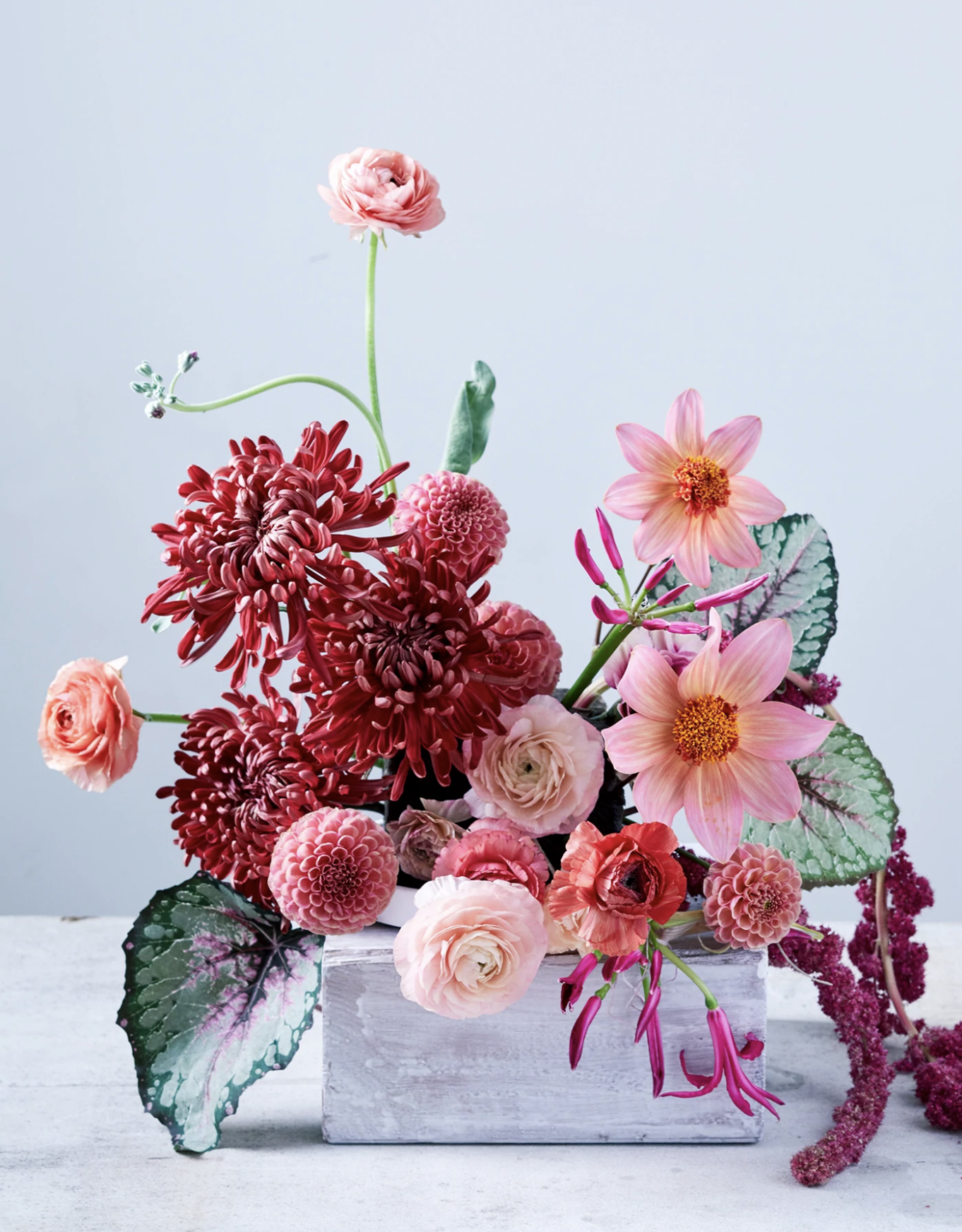
Photo via Cass School of Floral Design.
Boston’s Cass School of Floral Design and the New York Flower School are some of the role-modeling educators encouraging their students to employ eco-friendly sustainability practices. Both leading floral schools, as well as others, have announced that they will use Agra wool as an alternative to the ubiquitous green foam blocks that have been routinely used to hold flowers intact – particularly useful for wedding events. The Agra wool is 100% natural and biodegradable, unlike the green foam blocks that had plastic derivatives and weren’t biodegradable.
“Sustainability is the future,” says Calvert Crary, owner of New York Floral School in New York and Los Angeles.
“As younger consumers purchase flowers, many are focused on not only a flower’s aesthetics but the story behind the flower, such as how and where it was produced,” adds Professor Ben Campbell from the Department of Agricultural and Applied Economics at the University of Georgia. “For these generations of flower buyers, production practices are taking on an ever-growing importance in shaping what they purchase and what they are demanding from suppliers and retailers.”
It is why veteran florist Kirsten VanDijk, who is the only distributor in the U.S. of Agra Wool, through her company New Age Floral, sought out alternatives.

Photo via New Age Floral.
“We needed a transformation and a good option to transition towards more eco-friendly practices,” she says. “Little things can have a big effect” and it all adds up.
Because of her passion for helping the planet, VanDijk has done an impressive job of convincing many to use the alternative bricks that are made from basalt wool with plant-based starch binders. The industry has paid attention to both her success and efforts. She also unveiled the Oschun Pouch, which can be used for ceiling installations among many uses.
Trendsetters like Ingrid Carozzi of Tin Can Studios in Brooklyn, New York, Holly Chapple in Loudoun County, Virginia and Kiana Underwood of Tulipina in Lake Como and New York have been role models to show florists and the public how one can achieve a beautiful outcome using eco-friendly options.

Photo via Tin Can Studios.
It is not only bio-degradable foam that is driving research and a “new focus in sustainability,” as veteran flower entrepreneur Alex Frost calls it.
“The industry is shifting away from plastic to paper options for wrapping flowers,” he points out, noting that collectively this reduces carbon footprints. Customers also notice the efforts and applaud them. Even pots are becoming biodegradable with partnerships with Ellepot, Ahlstrom-Munksjö, and OrganoClick. A new market for hemp twine is also trending over the paper-covered wire.
Furthermore, what’s old becomes new again. Holding devices such as chicken wire or floral mesh are regaining popularity. In fact, veteran wedding planner Holly Chapple has also created an alternative known as the “egg” to hold flowers together.
“There’s also a new product by Oasis called Floral Mesh which is more pliable than the chicken wire,” shares Tyke Patriquin, Administrative Director, of the Cass School of Floral Design.
“It’s a process,” florist Carrie Wilcox notes. “But florists care about nature which is why we are in this industry – to create beauty and improve the environment.”
A version of this story originally appeared on FlowerPowerDaily.com.
Jill Brooke is a former CNN correspondent, Post columnist and editor-in-chief of Avenue and Travel Savvy magazine. She is an author and the editorial director of FPD, and a contributing digital editor of aspire design and home magazine.
Like what you see? Get it first with a subscription to aspire design and home magazine.
